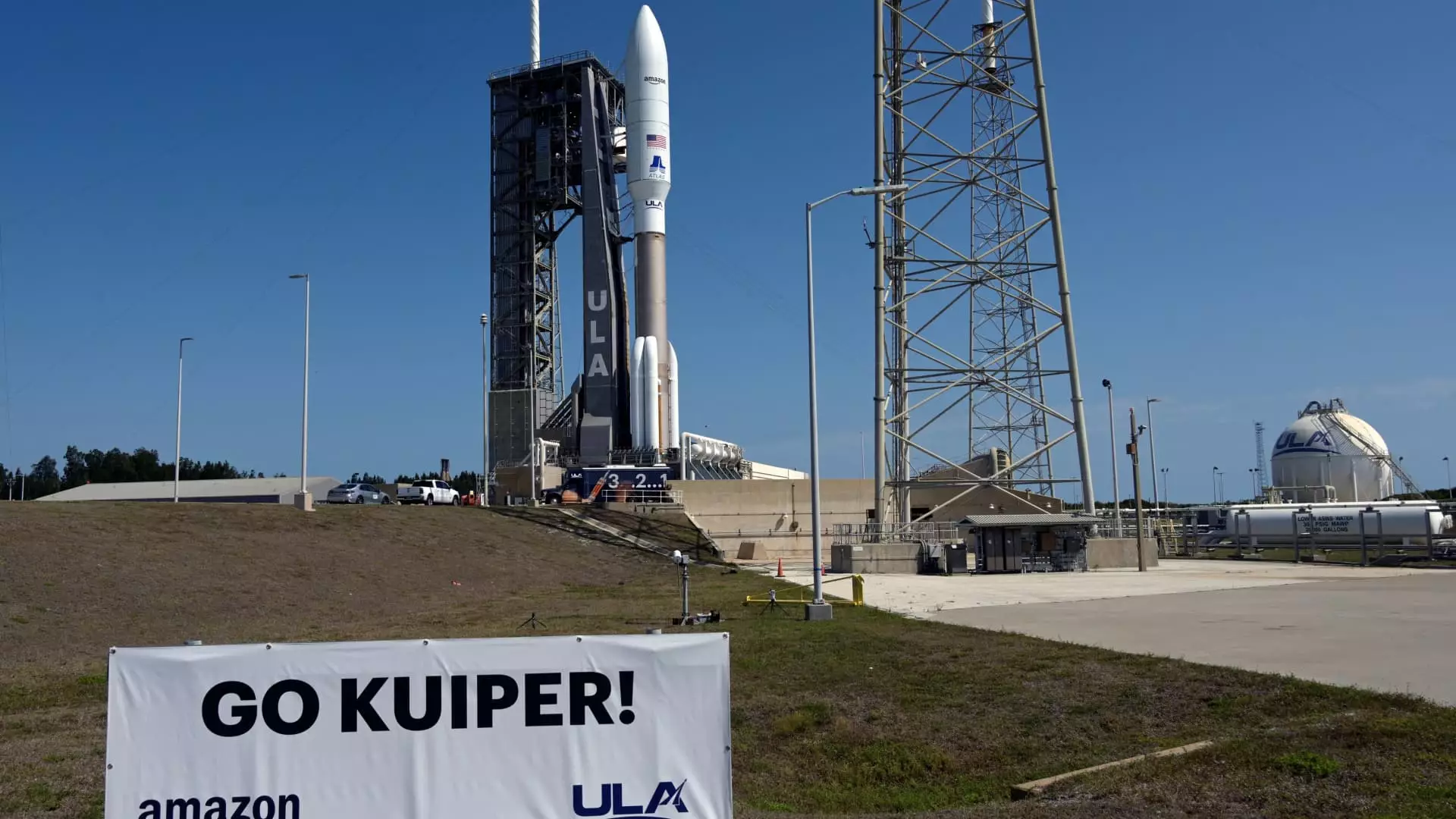In a sobering reminder of the inherent unpredictability of space endeavors, United Launch Alliance (ULA) announced a delay in the launch of Amazon’s Project Kuiper satellites, citing a technical issue with the Atlas V rocket. The interruption occurred just half an hour before launch, underscoring the tumultuous nature of aerospace missions where technological malfunctions can unravel meticulously laid plans within moments. The specific problem was related to an “elevated purge temperature” in the booster engine, a failure that ULA CEO Tory Bruno acknowledged may have stemmed from a complication with a GN2 purge line. It is easy to dismiss such setbacks as mere inconveniences, but for projects as ambitious as Project Kuiper, these challenges reflect broader structural vulnerabilities within the burgeoning field of satellite internet.
The Challenges of Large-Scale Deployment
Since the dawn of the space race, the aspiration to connect humanity has been a driving force behind satellite construction and deployment. As companies like Amazon aim for a web of thousands of satellites to provide high-speed internet globally, the stakes elevate significantly. Amazon’s plan to send an initial batch of 54 satellites into orbit follows a successful launch of 27, but each delay adds another layer of complexity to their timeline, particularly with an FCC deadline looming over them. If Amazon fails to launch at least 1,618 satellites by mid-2026, the very foundation of their ambitious project may tremble under the weight of regulatory scrutiny and investor skepticism.
Competition and the Fight for Dominance
As Amazon enters a market largely dominated by SpaceX’s Starlink, the urgency for Project Kuiper becomes even more pronounced. With a finite window in the race for satellite internet supremacy, any hiccups can have cascading effects on public perception and market confidence. The entrance of players like SoftBank-backed OneWeb and Viasat only adds to the pressure. Each of these companies is vying for a piece of a lucrative pie, one that promises not just financial success but also a chance to reshape economies and societal interactions globally. However, the tech industry’s obsession with speed over reliability often leads to a dangerous precedent. It begs the question: are we prioritizing rapid deployment at the expense of quality and oversight?
The Cost of Innovation
This incident serves as a cautionary tale about the cost of innovation in the space industry. The desire to push boundaries and reach for the stars is palpable, but so too is the risk of missteps that can hinder progress. Each delay not only affects timelines but can also translate into financial setbacks. Investors look for assurance that their bets are sound, and setbacks like these can lead to hesitance in both funding and support for future ventures. The question arises: can Amazon afford to stumble along the way, or will it be forced to rethink its approach to risk management and technological reliability?
The path forward will be filled with challenges, and Project Kuiper must navigate these waters if it hopes to fulfill its ambitious plans. There is an inherent tension in the race for technological dominance; it might just be the struggles and delays that define the eventual story of success—or failure.

